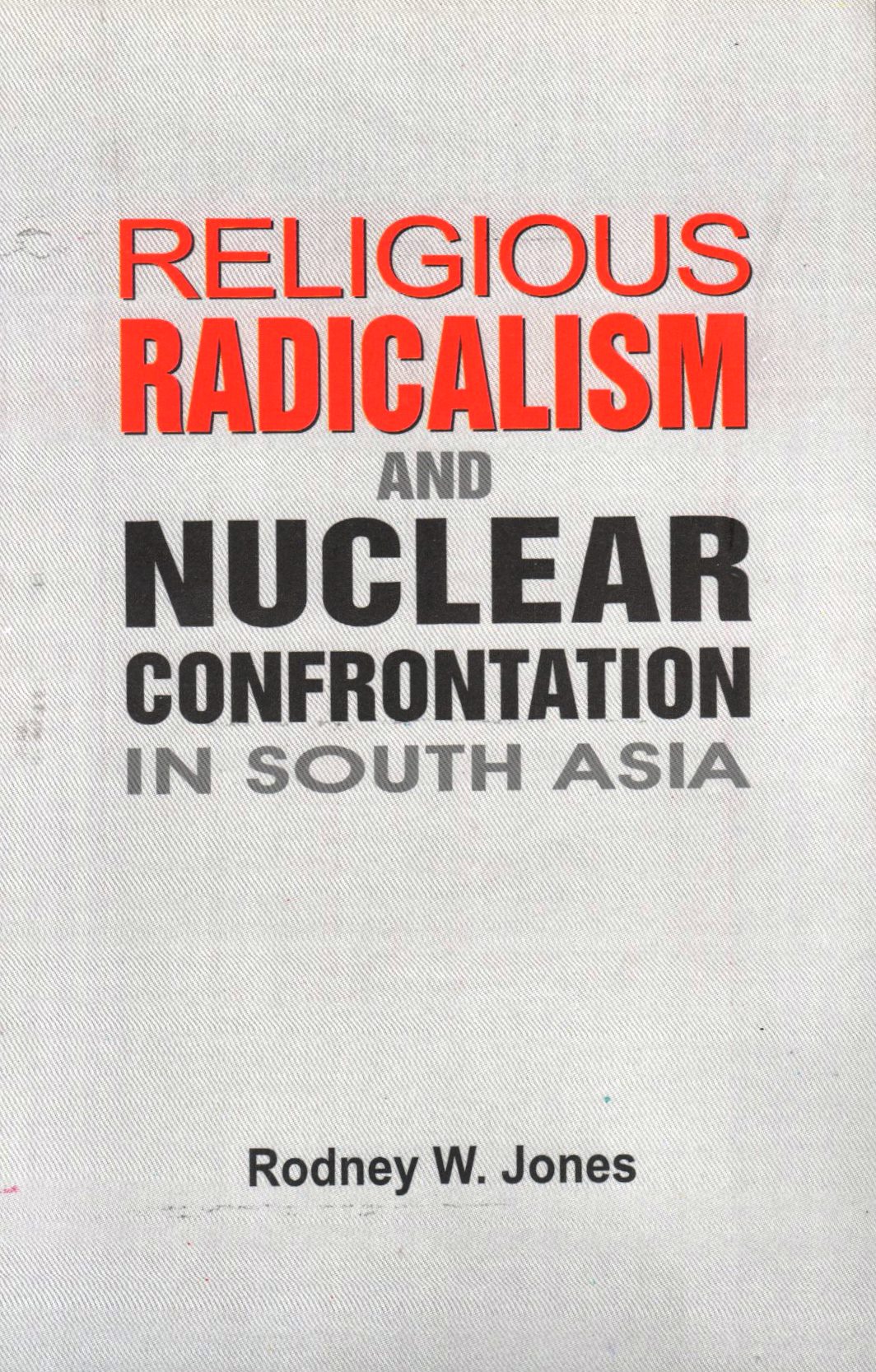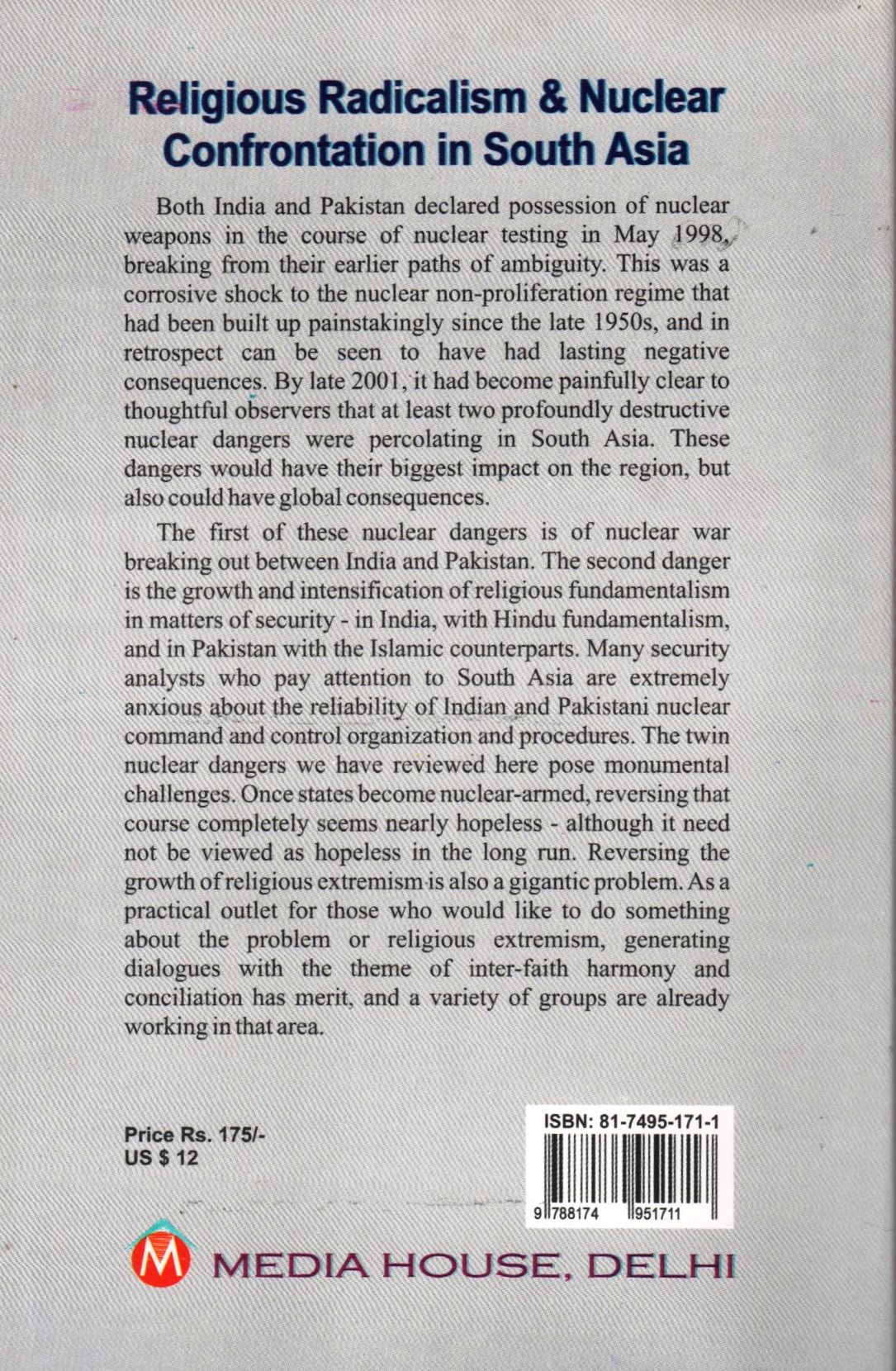Description
Contents
Preface
Richard Bonney
Introduction
Rodney W. Jones
The U.S. War on Terrorism: Religious Radicalism and Nuclear Confrontation in South Asia
Documents
U.S. Self-Perception of the War on Terrorism and its Impact on Central and South Asia
National Security Strategy of U.S.A.
Pakistani Nuclear Weapons Command & Control Mechanism
India Reviews Nuclear Command & Control Structure
Minimum Nuclear Deterrence Postures in South Asia: An Overview: Final Report
General Pervez Musharraf’s Speech Against Terrorism
12 January, 2002
U.S. State Department Envoy Richard Haass on Tension between India & Pakistan, 9 January, 2003
ABOUT THE BOOK-Religious Radicalism & Nuclear Confrontation in South Asia
Both India and Pakistan declared possession of nuclear weapons in the course of nuclear testing in May 1998, breaking from their earlier paths of ambiguity. This was a corrosive shock to the nuclear non-proliferation regime that had been built up painstakingly since the late 1950s, and in retrospect can be seen to have had lasting negative consequences. By late 2001, it had become painfully clear to thoughtful observers that at least two profoundly destructive nuclear dangers were percolating in South Asia. These dangers would have their biggest impact on the region, but also could have global consequences.
The first of these nuclear dangers is of nuclear war breaking out between India and Pakistan. The second danger is the growth and intensification of religious fundamentalism in matters of security – in India, with Hindu fundamentalism, and in Pakistan with the Islamic counterparts. Many security analysts who pay attention to South Asia are extremely anxious about the reliability of Indian and Pakistani nuclear command and control organization and procedures. The twin nuclear dangers we have reviewed here pose monumental challenges. Once states become nuclear-armed, reversing that course completely seems nearly hopeless – although it need not be viewed as hopeless in the long run. Reversing the growth of religious extremism is also a gigantic problem. As a practical outlet for those who would like to do something about the problem or religious extremism, generating dialogues with the theme of inter-faith harmony and conciliation has merit, and a variety of groups are already working in that area.





Reviews
There are no reviews yet.